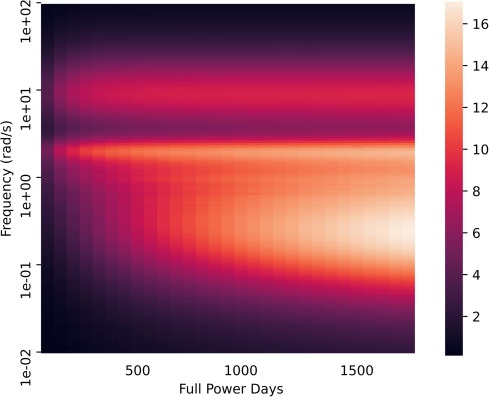
Doctoral student Alex Wheeler, who is studying under Research Assistant Professor Ondrej Chvala, led research with Chvala and Joint Faculty Assistant Professor Steve Skutnik that leveraged their dynamic system model to devise a new method for the underexplored topic of safeguarding Molten Salt Reactors (MSRs). Their findings were recently published in Annals of Nuclear Energy.
Every nation that signs the Nuclear Nonproliferation Treaty has to verifiably declare that all of its nuclear material remained in peaceful use each year. Solid fuel assemblies can keep track of plutonium simply by using a serial number and an accounting system, but this is a challenge for MSRs, which use liquid fuel, which can’t be so easily tagged.
The research team devised a way to determine if plutonium is diverted from the reactor using the reactor’s frequency response, offering a breakthrough for safeguarding MSRs. Specifically, it was discovered that the evolution of plutonium concentration impacts a particular and easily discernible pattern in frequency response. This pattern correlates with the amount of plutonium present in the MSR core.
“This method uses well established techniques to do something new,” said Wheeler. “Using the response to different frequencies of reactivity insertions in an MSR, we can tell many of the operating parameters of the reactor including whether or not plutonium has been removed.”
In addition to the difficulties of storing liquid fuel in a way that can be tracked, it is also difficult to install instrumentation on an MSR reactor that would safeguard the nuclear material simply due to the high temperature, radiation, and the corrosive nature of the fuel salt environment.

Heat map showing the change in frequency response phase shift over the fresh fuel salt as a function of burnup.
The advantage of the presented method is that it only requires very simple and potentially robust additional instrumentation, needing a neutron flux detector and a device capable of inserting a tiny amount of reactivity.
As an MSR that is fueled by low-enriched uranium undergoes burnup, plutonium will build up in the fuel salt and increasingly contribute to fissions. As a result, the kinetic parameters, mean neutron generation time and delayed neutron fraction, evolve with depletion.
The induced effects are large enough to be discerned as unique patterns in the MSR system frequency response. Likewise, a specific pattern emerges if there is a removal of plutonium.
This study uses Serpent 2 coding to determine fuel concentration since it can model continuous material feed and removal, and it also calculates core kinetic parameters.